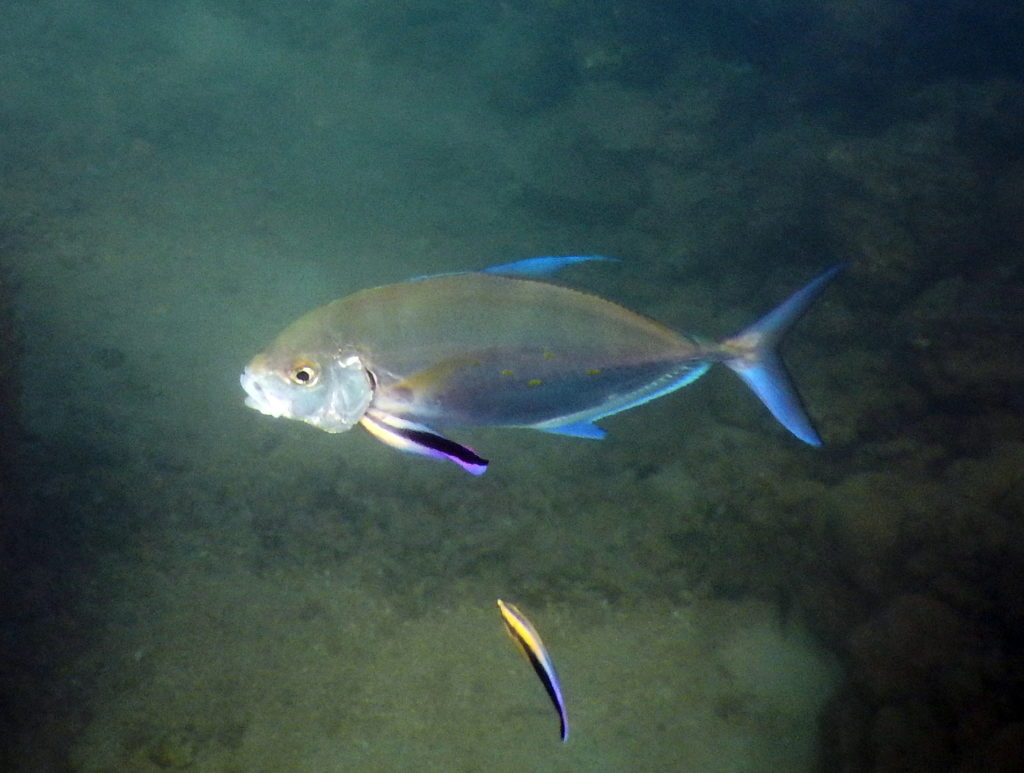Published in the Ocean Watch column, Honolulu Star-Advertiser © Susan Scott
August 20, 2016
Last week, in about 7 feet of water, I swam over a reef wall and found myself in the middle of a dozen jacks, a new species to me, each bearing yellow, dashiki marks on their sides.
Having a monster in their midst caused the fish to dart up, down and around, but surprisingly they didn’t flee. When I backed off, I saw why. The jacks were waiting for a turn at the spa.
Reef spas are run by narrow, 4-inch-long fish called cleaner wrasses. A variety of fish pick goodies off other fish for food, but only the cleaner wrasse sets up a service station. It’s a one-stop shop for pest removal, wound debridement and massage.
 A cleaner wrass with an island jack customer.
A cleaner wrass with an island jack customer.
©2016 Susan Scott
The wrasses work alone, in pairs or in teams up to five. To advertise their business, the little fish bob their neonlike bodies up and down. The front half of the fish’s body is a glowing yellow, and the rear half is purple with lavender edges. A black stripe runs from eye to tail, accentuating the fish’s bright colors.
You can’t tell a male from a female cleaner wrasse by color, but you can tell a juvenile from an adult because young cleaners are nearly all black. The kids get their grown-up colors early on, when they’re only about an inch and a half long. If a cranky adult chases away a little wrasse sporting its new colors, the youngster can change back to black and safely move to a friendlier neighborhood.
When I first learned about cleaner wrasses while studying biology at the University of Hawaii, the fact that Hawaii hosts an endemic species was so emphasized that I thought the little service fish was a Hawaii-only phenomenon. Later, though, I saw similar cleaner wrasses on just about every reef I visited in the tropical Pacific. The Hawaiian cleaner wrasse, it turns out, is only one of five species in the Indian and Pacific oceans. Ours, though, is the prettiest.
Not all fish that visit wrasse cleaning stations have parasites or dead skin that’s bugging them. Researchers believe that the sensation of the wrasses’ fins wiggling against the skin feels good to their clients. Big fish sometimes come just for a back rub.
The jacks I saw lining up for a rubdown are a rather rare species here. Called island jacks, yellowspot trevally or ulua, these silvery fish with yellow side spots usually school in deep water but sometimes come inshore. They grow to about 28 inches.
I’d never before seen a school of island jacks or watched any jack hold perfectly still with mouth and gill covers open while a cleaner wrasse worked it over. That’s why I don’t mind snorkeling in the same seemingly unremarkable places over and over. I never know what I’m going to get, and it’s always an adventure.